Coupling Study of Deformation Field Evolution and Acoustic Emission Response Characteristics in Rock Failure and Instability Process
Abstract
1. Introduction
2. Analysis of Rock Failure Instability Mechanism Based on Multifield Monitoring
3. Test Equipment and Experimental Scheme
3.1. Equipment and Experiment Design
3.2. Test Process and Results
4. Analysis of Test Results
4.1. Analysis of Acoustic Emission Characteristics
4.2. Analysis of the Evolution Characteristics of a Deformation Field
5. Correspondence between Acoustic Emission Characteristics and Deformation Evolution Characteristics
5.1. Analysis of Statistical Characteristics
5.2. Analysis of Global Evolution Characteristics
6. Dynamic Evolution and Quantitative Description of Specimen Damage
6.1. Clustering Analysis Algorithm
6.2. Analysis of Global Evolution Characteristics
7. Conclusions
Author Contributions
Funding
Institutional Review Board Statement
Informed Consent Statement
Data Availability Statement
Conflicts of Interest
References
- Yang, Y.; Xiong, B.; Peng, S.; Liu, S.; Chen, H.; Zhang, T. Transient electromagnetic characteristics of coal seams intruded by magmatic rocks. PLoS ONE 2022, 17, e0263293. [Google Scholar] [CrossRef] [PubMed]
- Xue, J.; Chen, Z.; Li, Y.; Wang, J.; Li, X. Failure characteristics of coal-rock combined bodies based on acoustic emission signals. Arab. J. Geosci. 2022, 15, 135. [Google Scholar] [CrossRef]
- Bu, F.; Xue, L.; Zhai, M.; Huang, X.; Dong, J.; Liang, N.; Xu, C. Evaluation of the characterization of acoustic emission of brittle rocks from the experiment to numerical simulation. Sci. Rep. 2022, 12, 498. [Google Scholar] [CrossRef] [PubMed]
- Liu, X.; Han, M.; Li, X.; Cui, J.; Liu, Z. Elastic wave attenuation characteristics and relevance for rock microstructures. J. Min. Sci. 2020, 56, 216–225. [Google Scholar] [CrossRef]
- Zhao, Y.; Li, B.; Zhang, C.; Cheng, C. Experimental study on charge induction and microseismic laws of coal and rock with different combination ratios. J. Saf. Sci. Technol 2019, 15, 107–112. [Google Scholar]
- Li, J. Research on the application of acoustic emission intelligent monitoring and early warning technology for the coal-rock dynamic disasters in underground mining faces. In IOP Conference Series: Earth and Environmental Science; IOP Publishing: Bristol, UK, 2020; Volume 526, p. 012121. [Google Scholar]
- Zhang, G.; Li, H.; Wang, M.; Li, J.; Deng, S. Comparative study on damage characterization and damage evolution of rock under uniaxial compression. Chin. J. Geotech. Eng. 2019, 41, 1074–1082. [Google Scholar]
- Zuo, J.; Pei, J.; Liu, J.; Peng, R.; Li, Y. Investigation on acoustic emission behavior and its time-space evolution mechanism in failure process of coal-rock combined body. Chin. J. Rock Mech. Eng. 2011, 30, 1564–1570. [Google Scholar]
- Li, S.; Yin, X.; Wang, Y.; Tang, H. Studies on acoustic emission characteristics of uniaxial compressive rock failure. Chin. J. Rock Mech. Eng. 2004, 23, 2499–2503. [Google Scholar]
- Ma, Z. Exploration on adaptive digitalfilting of site noise in rock ae test. Chin. J. Rock Mech. Eng. 1999, 6, 685–689. [Google Scholar]
- Zhang, W.; Xingping, L.; Tao, Q.; Jiang, D.; Zhang, G.; Ying, T. Acoustic emission monitoring for dynamic destabilization of heavy and steep coal seam. J. Xi’an Univ. Sci. Technol. 2011, 31, 253–255. [Google Scholar]
- Wang, E.; Liu, X.; He, X.; Li, Z. Acoustic emission and electromagnetic radiation synchronized monitoring technology and early-warning application for coal and rock dynamic disaster. J. China Univ. Min. Technol. 2018, 47, 942–948. [Google Scholar]
- Zhou, Y.; Wu, S.; Xu, X.; Sun, W.; Zhang, X. Particle flow analysis of acoustic emission characteristics during rock failure process. Chin. J. Rock Mech. Eng. 2013, 32, 951–959. [Google Scholar]
- Liu, F.; Yang, T.; Zhang, P.; Zhou, J.; Deng, W.; Hou, X.; Zhao, Y. Dynamic inversion of rock fracturing stress field based on acoustic emission. Rock Soil Mech. 2018, 39, 1517–1524. [Google Scholar]
- Shang, J.; Hu, J.; Zhou, K. Numerical tests on heterogeneous effect in damage and acoustic emission characteristic of rocks under uniaxial loading. J. Cent. South Univ. Sci. Technol. 2013, 44, 2470–2475. [Google Scholar]
- Hassan, G.M. Deformation measurement in the presence of discontinuities with digital image correlation: A review. Opt. Lasers Eng. 2021, 137, 106394. [Google Scholar] [CrossRef]
- Song, H.; Zhao, Y.; Elsworth, D.; Jiang, Y.; Wang, J. Anisotropy of acoustic emission in coal under the uniaxial loading condition. Chaos Solitons Fractals 2020, 130, 109465. [Google Scholar] [CrossRef]
- Alam, S.Y.; Saliba, J.; Loukili, A. Fracture examination in concrete through combined digital image correlation and acoustic emission techniques. Constr. Build. Mater. 2014, 69, 232–242. [Google Scholar] [CrossRef]
- Uzun, F.; Korsunsky, A.M. The height Digital Image Correlation (hDIC) technique for the identification of triaxial surface deformations. Int. J. Mech. Sci. 2019, 159, 417–423. [Google Scholar] [CrossRef]
- Lin, L.-x.; Xu, M.-j.; Xu, J.-j.; Lu, H.; Ye, C.-h.; Yu, C.; Chen, J.-m. Measurement and evaluation of strain fields in T23 steel based on digital image correlation method. J. Cent. South Univ. 2017, 24, 1977–1985. [Google Scholar] [CrossRef]
- Munoz, H.; Taheri, A.; Chanda, E. Pre-peak and post-peak rock strain characteristics during uniaxial compression by 3D digital image correlation. Rock Mech. Rock Eng. 2016, 49, 2541–2554. [Google Scholar] [CrossRef]
- Munoz, H.; Taheri, A. Postpeak Deformability Parameters of Localized and Nonlocalized Damage Zones of Rocks under Cyclic Loading; ASTM International: West Conshohocken, PA, USA, 2018. [Google Scholar]
- Ma, Y.; Chen, W.; Yang, D.; Yang, J.; Gong, Z. Experimental study of brittle rock failure based on three-dimensional digital image correlation technique. Rock Soil Mech. 2017, 38, 117–123. [Google Scholar]
- Zhu, Q.; Li, D.; Han, Z.; Li, X.; Zhou, Z. Mechanical properties and fracture evolution of sandstone specimens containing different inclusions under uniaxial compression. Int. J. Rock Mech. Min. Sci. 2019, 115, 33–47. [Google Scholar] [CrossRef]
- Zhao, J.; Yin, L.; Guo, W. Influence of three-dimensional roughness of rock fracture on seepage characteristics based on the digital image technology. Arab. J. Geosci. 2018, 11, 778. [Google Scholar]
- Zhao, C.; Tian, J.; Matsuda, H.; Zhao, C.; Bao, C. Crack propagation and damage of rock under uniaxial compression based on global strain field analysis. Chin. J. Rock Mech. Eng. 2015, 34, 763–769. [Google Scholar]
- Hu, X.; Gong, X.; Hu, H.; Guo, P.; Ma, J. Cracking behavior and acoustic emission characteristics of heterogeneous granite with double pre-existing filled flaws and a circular hole under uniaxial compression: Insights from grain-based discrete element method modeling. Bull. Eng. Geol. Environ. 2022, 81, 162. [Google Scholar] [CrossRef]
- Song, Y.; Ma, S.; Yang, X.; Wang, X. Experimental investigation on failure of rock by digital speckle correlation methods. Chin. J. Rock Mech. Eng. 2011, 30, 170–175. [Google Scholar]
- Pan, B.; Qian, K.; Xie, H.; Asundi, A. Two-dimensional digital image correlation for in-plane displacement and strain measurement: A review. Meas. Sci. Technol. 2009, 20, 062001. [Google Scholar] [CrossRef]
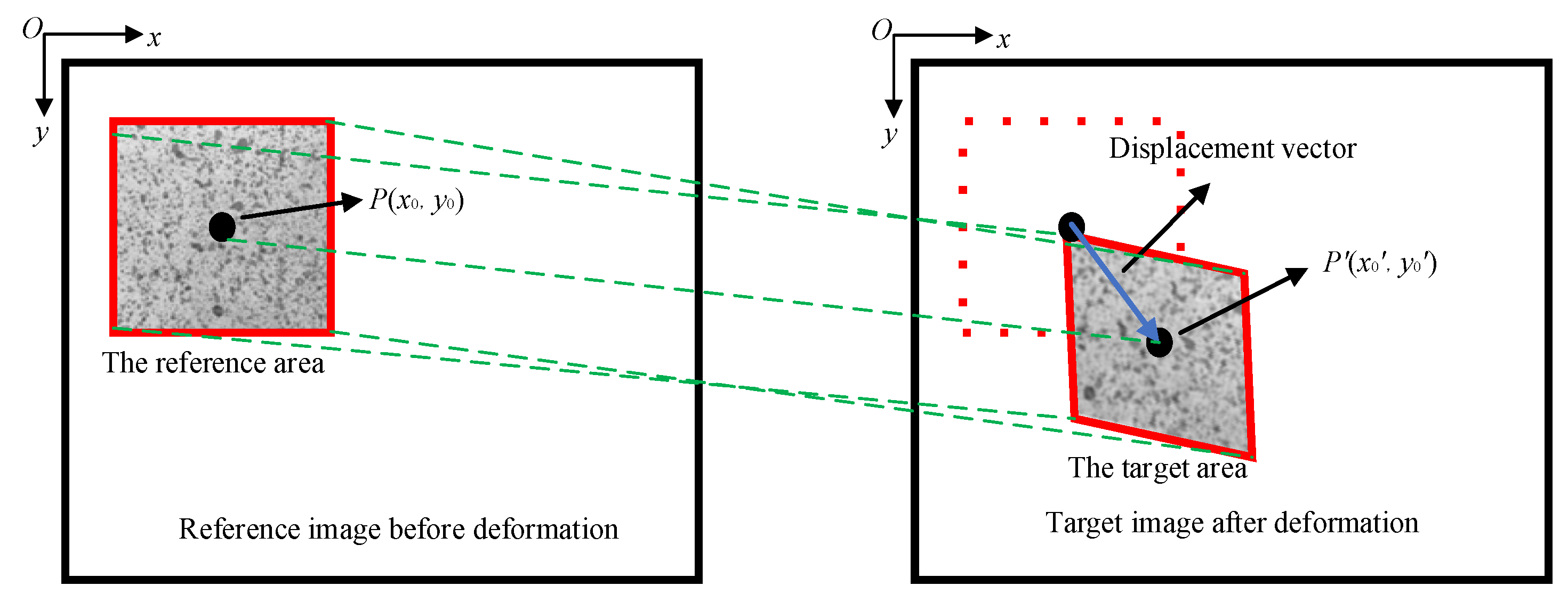


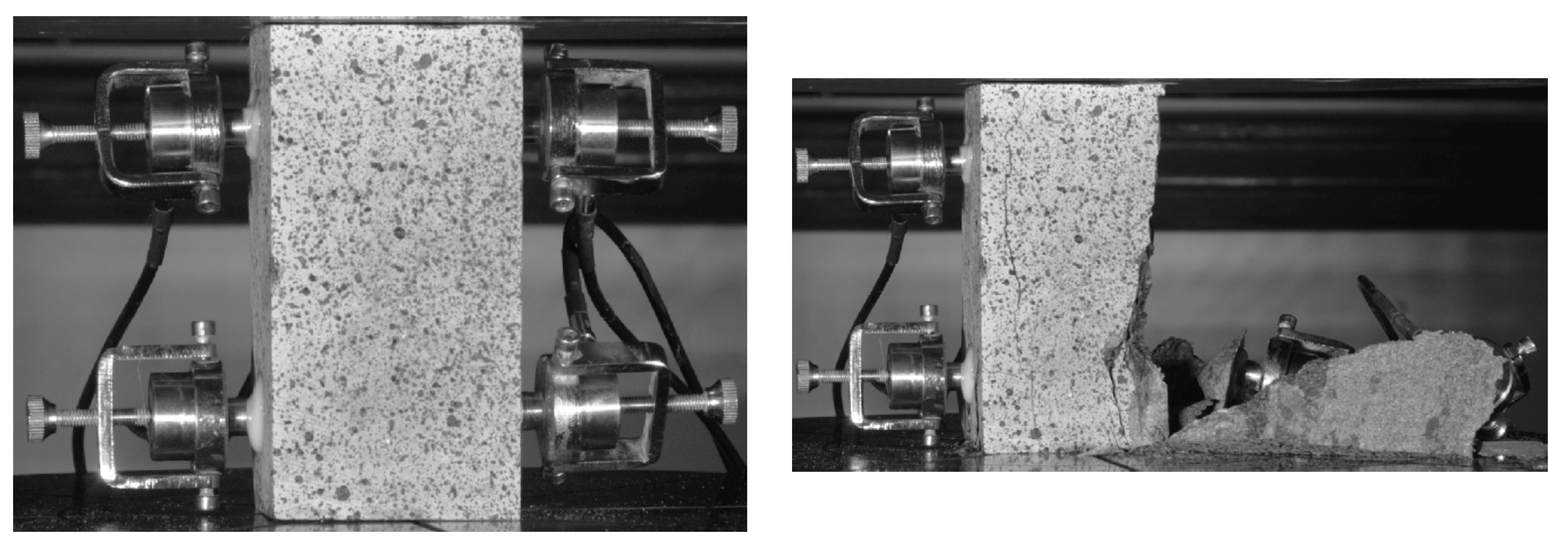


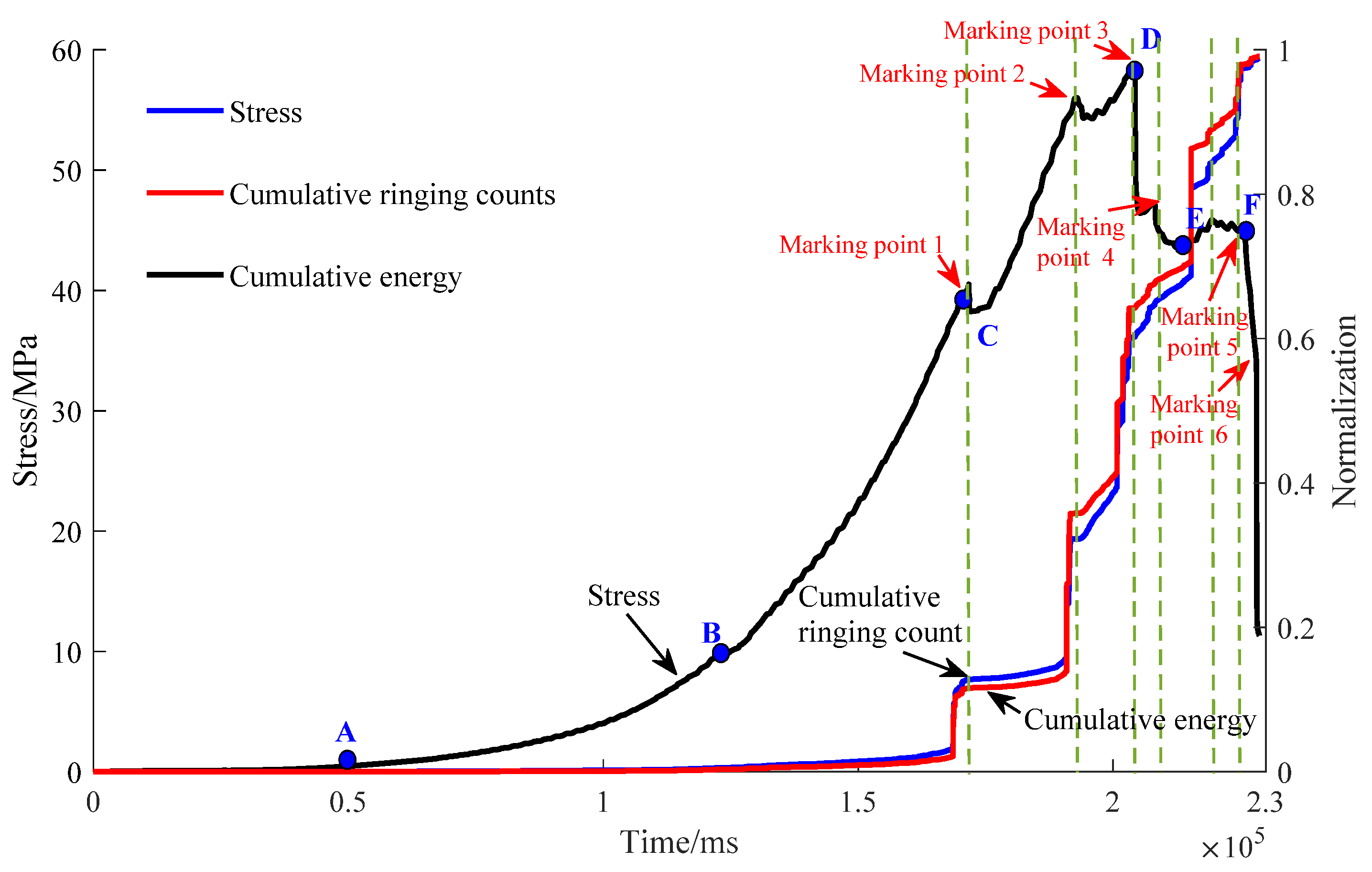

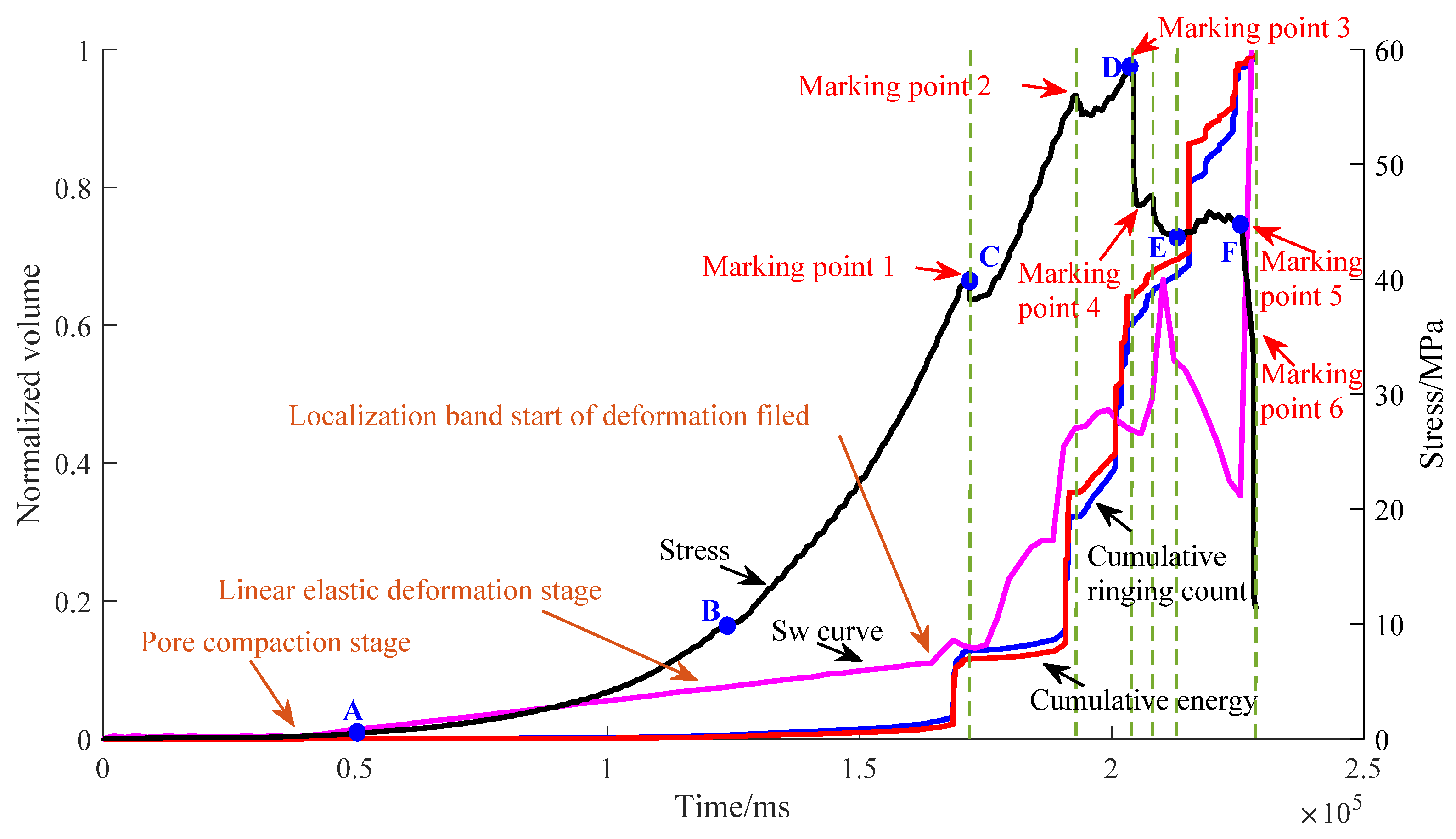
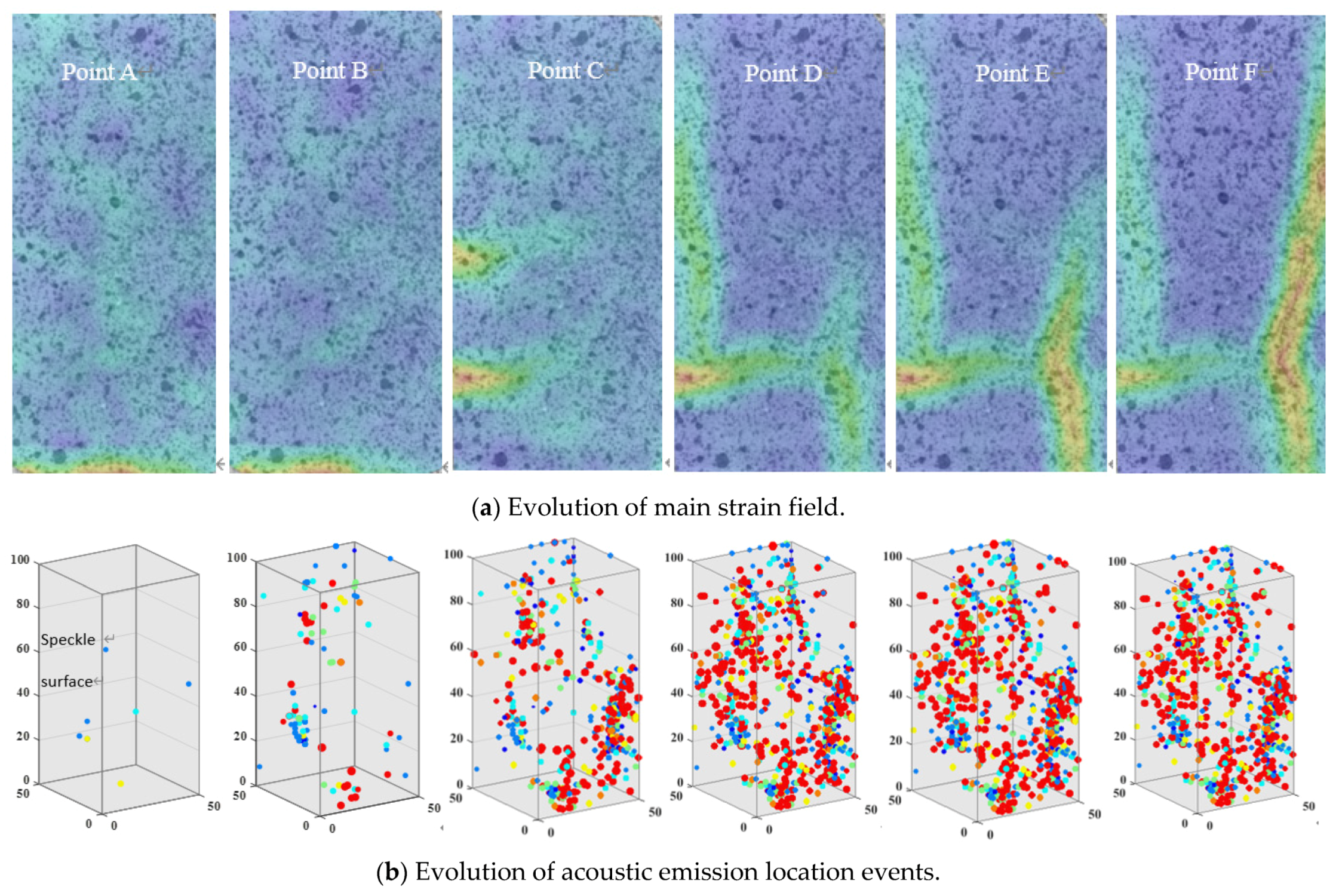
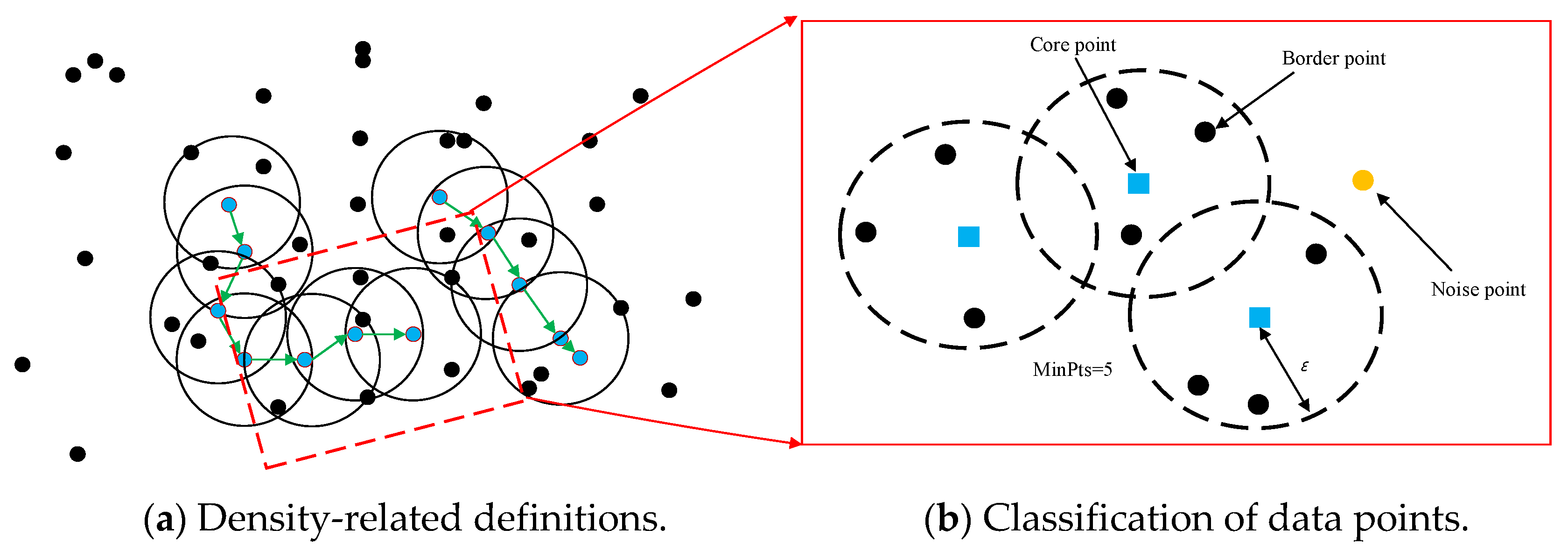

Publisher’s Note: MDPI stays neutral with regard to jurisdictional claims in published maps and institutional affiliations. |
© 2022 by the authors. Licensee MDPI, Basel, Switzerland. This article is an open access article distributed under the terms and conditions of the Creative Commons Attribution (CC BY) license (https://creativecommons.org/licenses/by/4.0/).
Share and Cite
Yu, Z.; Zhu, Q.; Zhang, E.; Zhang, Y.; Gu, L.; Sui, L.; Yin, Y. Coupling Study of Deformation Field Evolution and Acoustic Emission Response Characteristics in Rock Failure and Instability Process. Sustainability 2022, 14, 15037. https://doi.org/10.3390/su142215037
Yu Z, Zhu Q, Zhang E, Zhang Y, Gu L, Sui L, Yin Y. Coupling Study of Deformation Field Evolution and Acoustic Emission Response Characteristics in Rock Failure and Instability Process. Sustainability. 2022; 14(22):15037. https://doi.org/10.3390/su142215037
Chicago/Turabian StyleYu, Zhengxing, Quanjie Zhu, Erhui Zhang, Yihai Zhang, Lei Gu, Longkun Sui, and Yongming Yin. 2022. "Coupling Study of Deformation Field Evolution and Acoustic Emission Response Characteristics in Rock Failure and Instability Process" Sustainability 14, no. 22: 15037. https://doi.org/10.3390/su142215037
APA StyleYu, Z., Zhu, Q., Zhang, E., Zhang, Y., Gu, L., Sui, L., & Yin, Y. (2022). Coupling Study of Deformation Field Evolution and Acoustic Emission Response Characteristics in Rock Failure and Instability Process. Sustainability, 14(22), 15037. https://doi.org/10.3390/su142215037







